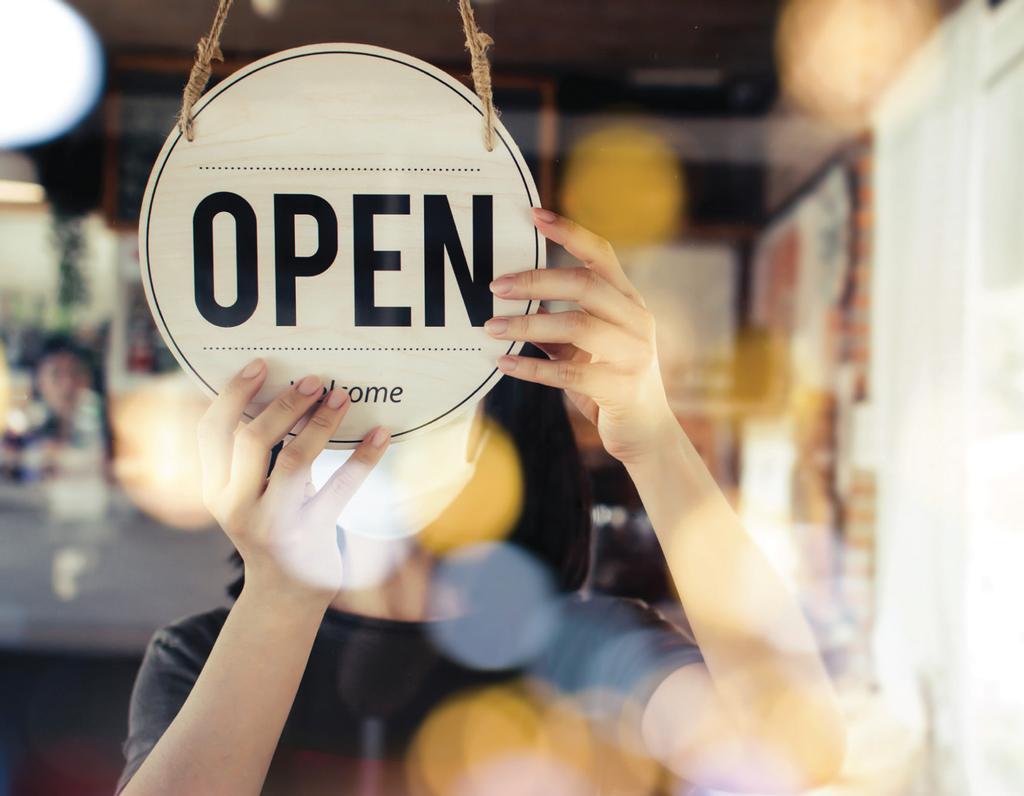Reopening ourselves: Healing from the trauma of the pandemic

BY // EMILY F. POPEK FROM ZINIO
IMAGES FROM SHUTTERSTOCK.COM


“Did you bring my mask, Mom?”
My 9-year-old is still buckled in, one hand hovering over the button to release her seat belt. I look out the window at the playground. The scene is like a scrapbook of memories from the past 18 months; all rolled into one moment. The temporary sign declaring “PLAYGROUND CLOSED” still stands, but it has been pushed aside. Another sign detailing mask requirements has been amended with reflective tape; the resulting message is mangled and confusing.
For what felt like a long time, the answer to this question was always “yes.” For so many months, my daughter didn’t ask to go to places like playgrounds because she knew they were closed. The early months of the pandemic were a lot like caring for a newborn: simple, but not easy. Our world grew so small that we knew every corner of it intimately, and while there was comfort at times in that sameness, it also felt oppressive.
Each morning, with brightly colored markers, my 9-year-old and I mapped out a schedule for the day. The Zooms that loosely held her days together were imperfect but vital. We penciled in times for school work and made note of her schedule for music class, P.E., math or ELA. Later in the day, I looked for the tiny pencil checkmarks that told me she had completed her tasks, because while I worked downstairs, my daughter sat by herself, staring at the two-dimensional simulacra of people she had never met.


At night, the worries of the wider world pushed in. One night my daughter told me that she felt like everyone had forgotten her and the world was just going on without her. “It doesn’t seem like anyone is even thinking about me,” she said through tears, and I cried too, because I felt the same loneliness and isolation.
Before the pandemic, the hard things my daughter has faced — minor injuries and childhood illnesses, the disappointments of an invitation declined or a dropped ice cream cone — had been easy to smooth over. I had been able to tell her with confidence that she was going to be OK. This was a clear and almost breathtaking privilege that we enjoyed, right up until March 13, when we got the call that her school would be closing indefinitely. Then, suddenly, none of us knew if any of us would be OK.
Anxieties that had been occasional and fleeting before the pandemic, like small wildfires easily snuffed out, started to flare up more often and more intensely as things around us began to reopen. Suddenly the schedule that had once been a reassuring tether began to tighten around my 9-year-old like a choke chain. Being five, two or even one minute late for a Zoom was cause for panic. Every night, she told me how she couldn’t believe the day was already over. On Tuesday she missed Monday, and Thursday she worried because Friday was almost there. It was as if the very passage of time — our slow and steady march forward out of the pandemic — was itself cause for panic.
“What I have learned, and what I hope I have reflected back to my daughter, is that it is safe to speak aloud our fears, worries, and needs so that they can be met by the people who love us with compassion.”
And maybe, in some ways, it was. When pandemic protocols were loosened in our community, cases surged. School reopened, only for cohorts of kids to get immediately shifted back to remote. The vaccination rollout was painfully slow to reach our area and extremely limited for several weeks. And yet, many of those around us kept moving out of their pandemic bubbles and back to “normal” life, long before we felt it was safe to do so. The uncertainty of shifting back and forth between hope and despair, caution and exuberance, took its toll.
I can’t ignore the trauma that these long months of uncertainty and isolation have caused, but it’s also true that I have watched my child and my family become stronger. What I have learned, and what I hope I have reflected back to my daughter, is that it is safe to speak aloud our fears, worries, and needs so that they can be met by the people who love us with compassion.
As our communities reopen, so too must we learn to reopen ourselves, not just to friendship and community, but also to struggle, uncertainty and risk. It is painful at times, but we cannot heal from the trauma of the pandemic without moving through this discomfort.
I hand my daughter her mask, but I also point to the sign. I remind her that she doesn’t need her mask for outdoor activities as long as she stays socially distant from other kids. She looks out the window, watching two other kids her age chase each other across the playground, and slips her mask onto her wrist.
“I’ll bring it,” she says, “just in case.”
For more on this story go to:ZINIO





